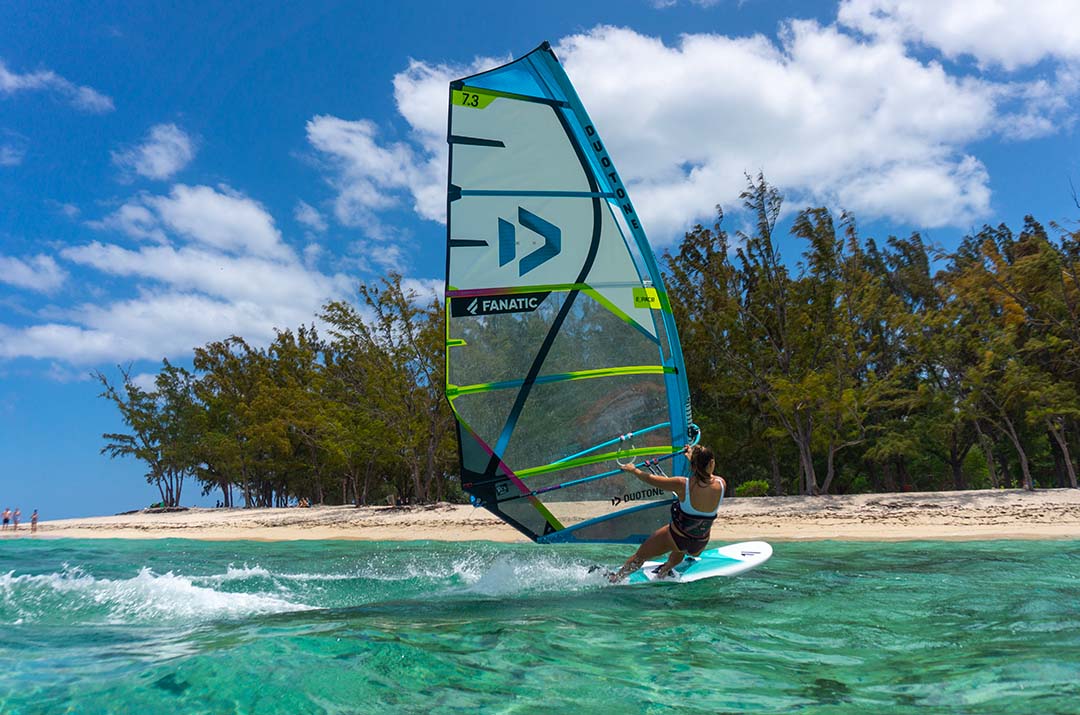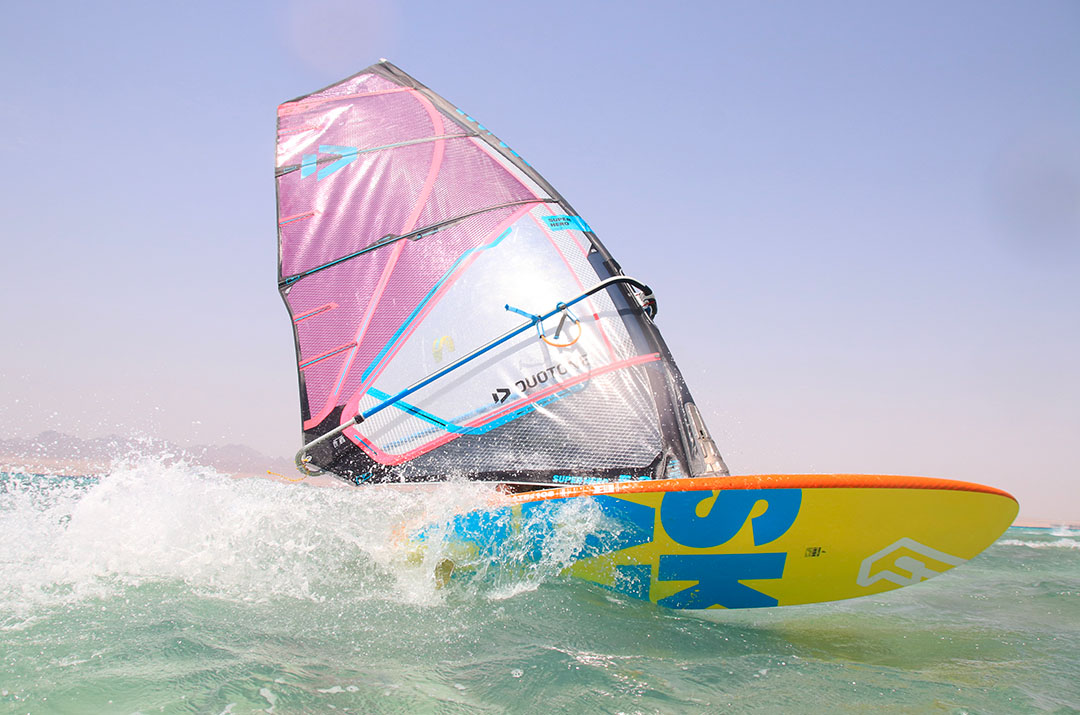Windsurf: Do you know how to Jibe?
Windsurfing has been around for a pretty long time, first appearing in the 1970’s, and it has remained a popular watersport with a strong community of passionate and committed fans.
Learning to windsurf takes patience and training in order to reach a basic foundational level to build from. Knowing how to return to the beach is essential, so learning to turn is especially important. Tacking turns you into the wind, and jibing is a turn away from the wind (downwind). A jibe can be a beautiful smooth turn without loss of speed, definitely a good one to learn!

What exactly is a jibe?
As mentioned, a jibe is a downwind turn which can be performed at high speed. This manoeuvre is intended for windsurfers who already have a good base level and are able to ride comfortably in the footstraps and harness.
Why jibe rather than tack?
Tacking allows the windsurfer to turn into the wind and so not to lose height, since you are not moving away from the wind. The turn can be essential to get back upwind, but there is a point in the turn where the board stops, making it necessary to regain speed after completing the turn.
Contrary to the tack, the jibe is a turn away from the wind. If done successfully, the windsurfer will not lose speed and can sail comfortably away on the new reach. It is an important turn to learn and once you have the basics of the jibe, you can windsurf in any conditions.
Learning to windsurf takes patience and training in order to reach a basic foundational level to build from. Knowing how to return to the beach is essential, so learning to turn is especially important. Tacking turns you into the wind, and jibing is a turn away from the wind (downwind). A jibe can be a beautiful smooth turn without loss of speed, definitely a good one to learn!
How to jibe?
Before any jibe manoeuvre, it is important to be well set-up. To do this, you need to be safely in the foot straps and harness, sailing with maximum speed. When ready to turn, firstly unhook from the harness and take your back foot out of the foot strap and place it right in front of you, between the back and the front strap. The front foot remains in the strap and the back hand moves down the boom (approx 10cm). Lift the heels slightly by pressing on the toes, bend the legs by pressing on the front leg, and gradually lean the front shoulder towards the mast. Important … look straight ahead and not at your feet or your hands.
It is very important to fully commit to the turn and not to hesitate, otherwise the jibe will not complete and the speed will be lost. You may end up in the water!
In order to know when you are on the new point of sail and pointing downwind (with the wind at your back), you will feel the back hand being pulled forward and the back arm also lengthening as the wind is pushing the sail. Downwind is the slowest point of sail, so take advantage of this very short moment to stay focused in your jibe.
You have the choice of releasing the back hand or leaving it on the boom. If you let go, you’ll have to do it right, because everything happens very quickly. For your first jibe experiences in windsurfing opt to keep your boom in both hands .
Keep your speed and start changing your feet on the board when the board has almost finished turning. When learning get yourself closer to the mast, the front foot between the front strap and the mast, and the back foot between the front and back straps. You are now in a clew first position! This means that you have your feet in a switch stance for a few seconds. You are no longer downwind. It’s time to let go of the back hand.
Very quickly, you will need to recover the boom. Think of the mast as a third leg to lean on. The front hand can hold the mast above the front handle of the boom to assist you in changing the sail to the side.
This is when it’s time to really flex the legs in order to better control your position on the board, and to get back into the footstraps, front foot then back foot, and finally to hook into the harness. Some windsurfers pump their sail to get back planing faster.

How not to finish your jibe facing the wind?
Very often, the first jibes in windsurfing end up facing the wind, at a standstill, and then falling in! The rider thinks he has succeeded but at the last moment the sail recovery fails. This is why it is so important to look ahead and to the direction of the turn.
A jibe must end on the side-wind position, even if it means dropping downwind slightly in order to regain speed. Don’t stay too long on the back of the board, and don’t stay sheeted in too long after the manoeuvre, and don’t forget to straighten up, shoulders back. The body position is very important during a jibe.
How long will it take to learn to jibe?
Very often, it is necessary to make a large number of attempts before succeeding in your first “real” jibe and especially to keep your speed after the transition. The best training is undoubtedly to do it over and over again.
The carve itself is not the most difficult thing, but keeping your speed and not falling in when recovering the sail is the tricky part. As you can see, it will take you some time to learn how to make good jibes, but once you have learned, you will be the happiest and most independent on the water than you have ever been!
